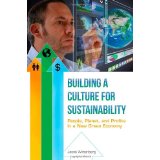You’re invited to be part of the solution to climate change
This week I’m passing along an invite to you from MIT’s Climate CoLab. The CoLab is a crowdsourcing platform where citizens work with experts and each other to create, analyze, and select detailed proposals for what to do about climate change.
On March 6, The CoLab launched some 22 new contests on everything from our energy supply to transportation options to a U.S. carbon price.
These contests are open to everyone. You can contribute to an existing proposal or create your own. Proposals can win a “popular” vote and they can be judged as winners by a panel of experts. The winner takes home a Grand Prize of $10,000 and gets the opportunity to present their proposal to experts who can help implement the idea.
Last year’s winner
In 2014, Danielle Dahan took home the Grand Prize award for a proposal to Improve Building Energy Performance: Green Job Skills Training. It addresses the shortage of qualified personnel to maintain the increasingly sophisticated heating, ventilation and air conditioning (HVAC) systems installed in green buildings today.
“As high performance green buildings increase in complexity,” Dahan wrote in her proposal, “we need to give building technicians the skills to maintain buildings and achieve high performance energy goals.” The curriculum, when in full motion, is projected to save 33 trillion metric tons of carbon each year in the United States alone.
What’s neat about the Climate CoLab
- It’s a great use of crowdsourcing. MIT knows that, as one institution, it can’t possibly house all the potentially life-changing, climate-saving ideas within its walls. So it has thrown open the doors to the world and said, “Come help figure this out.” With more diverse ideas – and more efficient ways to vet them – we can find and scale the solutions that work sooner.
- It’s a hub of activity. As of January 2015, over 270,000 people have visited the Climate CoLab, representing every country in the world, and over 30,000 have registered as members. The CoLab community also includes over 7,000 Facebook likes and 17,000 Twitter followers. To learn more about the Climate CoLab community, click here.
- It’s a fun way to tackle a critical issue. Because climate change is such a multi-faceted challenge, there are endless aspects to focus on. Choose the one that interests you most, and dive in!
Enter now
The new contests are open now. Peruse your choices (there are about 7 of these I’d sign up for in a heartbeat). Or add your own new idea. You must enter before Saturday, May 16, 11:59:59 PM Eastern Time.
The CoLab sponsors tell you when voting on the various proposals will occur. If history is any guide, the awards will be announced around November 2015.
So join in. You might just make the world a better place – for all of us!


